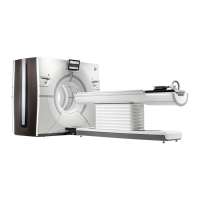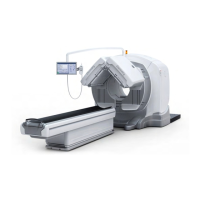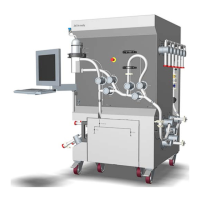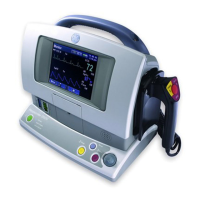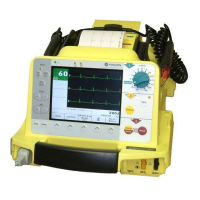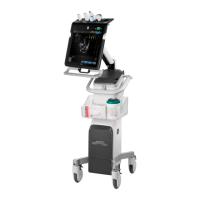•
WW/WL adjustment based upon the selected kV can be enabled by the user to optimize
contrast to noise and image quality for image viewing. WW/WL should be optimized for
image viewing based on the kV and mA.
kV Assist determines the recommended technique based on the baseline protocol, the scan
conditions.
kV Assist will optimize the scan parameters based on the selected clinical task.
In each clinical task, the system determines the patient size from the scout projection data. This
is used in conjunction with a reference protocol (i.e., the X-ray scan technique factors that would
be used without kV Assist) to determine the expected amount of image contrast for the relevant
materials. The system then determines the Noise Index/tube current needed to provide the
proper balance between CNR and image noise at each of the tube voltages. The combination of
tube voltage and Noise Index/tube current that results in the lowest CTDI
vol
at the desired image
quality is then selected. Note that the tube voltage with the lowest CTDI
vol
may not be selected
for some patient sizes and applications in order to maintain the desired image quality (e.g., in
order to avoid situations where potential image artifacts could occur).
For cardiac scans with kV Assist, the system determines a size adjustment of the Noise Index
(for SmartmA scans), SFOV and mA based on the patient size from the scout projection data.
The NI/mA for a reference size patient is given in the protocol, and this is adjusted by kV Assist
prior to (and used in) the kV selection. This allows for the inclusion of size-specific image quality
needs in cardiac scanning without having multiple size-based protocols.
2.7.3 Image Display
Images of the same anatomy scanned with different tube voltages appear different. This is
expected, because of the description above regarding Contrast-to-Noise Ratio changes. For
example, images obtained with X-ray scan technique factors set by kV Assist could be brighter
in areas (due to increased contrast) and noisier (due to increased noise). Even though similar
information is present in the image, the change to the image appearance could be distracting. In
order to minimize this change, kV Assist also provides the option for the system to modify the
protocol’s reference WW and WL (i.e., the WW and WL that would be used without kV Assist for
an average patient).
2.7.4 kV Assist FAQs
What suggestions do you have for a new kV Assist user?
•
If you are not familiar with the concept of Noise Index (image noise), see SmartmA. In order
to become familiar with kV Assist's impact on images, you can experiment by scanning
different phantoms (ones that include regions of contrast are most appropriate for evaluating
the modes based on contrast agent enhancement).
•
Review the image quality that is obtained with the kV and Noise Index/mA selected to
optimize the settings.
Why is the kV with the lowest CTDI
vol
not always the recommended kV?
Based on the clinical task and the size/composition of the patient, kV Assist may not
recommend some tube voltages that could result in degradation in image quality.
What if kV Assist selects the baseline kV, but the prescribed NI cannot be reached?
Revolution CT User Manual
Direction 5480385-1EN, Revision 1
Chapter 11 Scan 243
